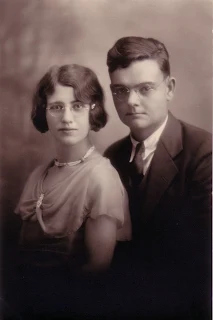Part 21 of the series
Are Native Americans Relevant?
People
of different races have mixed on North America ever since the first Europeans
came.
Since
De Soto first arrived in Florida, Africans found refuge in Native American communities.
Throughout Desoto’s rampage from South
Carolina to the Mississippi River, African slaves continually escaped and
became first Old World settlers. Native
groups remained sanctuaries for escaped slaves. They found their way to the
more distant areas of the continent.
Some tribes did enslave the runaways, most
notably the Creek and Cherokee. When enslaved together, Native Americans and
Africans often intermarried. The first
patriot to die in the American struggle for independence was the Native American
and African man Crispus Attucks, who was shot in the Boston Massacre 5 March
1770.
According
to Spanish observers, 50 percent of the English men in Jamestown had
relationships with Native women. This information
was kept out of American histories.
White settlers frequently left communities to
live with the Native Americans. White
captives often refused to leave. Women
in particular were treated much better in Native communities. This created great theological and cultural
problems for the colonial governments.
Several colonies passed laws forbidding this. In an attempt to stop it, a new American
genre of literature was born, accounts written by captives with horrifying
details to induce fear of Natives.
The
British government encouraged the immigration of Scottish men and their
participation in the fur trade in the colonies.
At this period of time, Scottish highlanders were considered almost as
savage and uncivilized as the Native Americans.
These traders usually were more successful if they married Native American
women. It was a law with the Southeastern tribes. The children often held
positions of respect because they knew both worlds.
In
Canada the mixed families created their own society along the Red River in
Manitoba, Canada. Wealthy Scottish
traders sent their children back to the home country to be educated. Sometimes they retired there, taking their
Native wives and their mixed-blood children home to Scotland.
Intermarriage
was frequent between Spanish soldiers and Native women in Mexico, Florida, and
Caribbean. The Spanish government
ignored the need for Spanish women.
Prejudice against Native blood in Spanish America was still common. People tried to hide their Native background. Native Americans who could speak Spanish and
wore Mexican clothing were called mestizos.
In the 18th century the Spanish colonial government gave the
mestizos a way to become white by selling them certificates of whiteness.
In
Alaska Russian male fur traders consorted with Native women. Their children were given equal rights and
Russian citizenship and made subjects of the czar. After obtaining Alaska, the United States
tried to deny their rights.
Mixed
French and Indian people in French Canada are called Métis. Intermarriage was encouraged early on by the French
government and continued after British took control. Native American women legally became French
upon their marriage. In the western and
northern provinces Native females were regularly sold for wives.
A
large Métis population
developed in western Canada. It combined
Woodland and Plains culture with European.
In the Victorian era, as a result of the Age of Reason and Charles
Darwin’s writings on the survival of the fittest species, the people of mixed
heritage were looked down upon. It was
thought interracial coupling led to poor morals and behavior and could bring
down the European race and the British Empire.
The
educated Métis
knew they were not intellectually inferior and wanted equal status and their own
land in Canada. In 1869 Louis Riel first
led the Métis
to seize Fort Garry in Manitoba. They established
a government in Winnipeg and petitioned for admission to Canada as a new
province. They were not successful.
In
1885 the Métis
tried again. They needed to defend their
farms in Saskatchewan after they were driven away from the Red River in
Manitoba. Riel tried to establish a Métis nation again. He worked through diplomatic and political
channels with no success. Canadian government
forces put down the revolt, captured Riel and hanged him 16 November 1885 in
Regina.
After
the second failure to create their own place in Canadian society, most Métis had to decide whether to
be white or Native. Those choosing to be
Native joined Native relatives in the Great Lakes area and the central plains of
North American. Many French speaking
families worked for white farmers. Others
moved into Quebec, New England and New York to participate in communities there.




